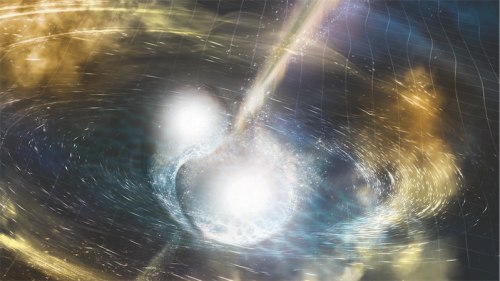
The international team detected the gravitational waves from the neutron star collision on August 17, alerting astronomers around the world to the likely existence of signals such as light, gamma rays and radio waves from the same event.
The latest breakthrough discovery promises to revolutionise humanity’s understanding of the universe, opening up a scientific field where gravitational wave scientists and astronomers work together.
ANU is playing a leading role in Australia’s involvement with the gravitational wave discovery though the partnership in the Advanced Laser Interferometer Gravitational-Wave Observatory (LIGO), which is based in the United States.
Prof Susan Scott, who is leader of the General Relativity Theory and Data Analysis Group at ANU, says gravitational waves would unlock many secrets of the universe.
“This discovery of neutron stars colliding is just the beginning. We want to one day look back to the beginning of time – just after the Big Bang, which we can’t do with light,” says Prof Scott.
“This is the first time that the collision of two neutron stars has been detected, and this is the closest and most precisely located gravitational wave signal we’ve received. It is also the loudest gravitational wave signal we’ve detected.”
Neutron stars are the densest stars in the universe, with a radius of about 10 kilometres.
Prof Scott says neutron star mergers were likely to be the site where much of the universe’s heavy metals such as gold, platinum and uranium are produced.
“With this discovery we have the opportunity to learn so much more about neutron stars, which have been quite a mystery to us,” she says.
“Unlike black holes, neutron star collisions emit other signals such as gamma rays, light and radio waves so astronomers around the world were able to observe the event through telescopes. This is an amazing time to be a scientist.”
ANU astronomer Dr Christian Wolf says his team used the SkyMapper and 2.3-metre telescopes at the ANU Siding Spring Observatory as part of the search for other signals from the neutron star collision.
“We saw the light from a fireball blasting out from the neutron star collision into space in the hours and days afterwards,” he says.
“SkyMapper was the first telescope to report the colour of the fireball, which indicates the temperature of the fireball was about 6000C – roughly the surface temperature of the Sun.”
Prof David McClelland from the ANU Research School of Physics and Engineering is leading a team that is developing new components and techniques for the LIGO detectors.
“Using quantum mechanical techniques, we will make the largest optical sensors ever built even more powerful,” he says.
“We will then detect many more gravitational waves from cataclysmic events in space, involving black holes, neutron stars and things not yet known. All of this paints an incredibly bright future for the field.”
The research is published in “Physical Review Letters, Nature and Astrophysical Journal Letters”.
Who can be trusted?
In a world of spin and confusion, there’s never been a more important time to support independent journalism in Canberra.
If you trust our work online and want to enforce the power of independent voices, I invite you to make a small contribution.
Every dollar of support is invested back into our journalism to help keep citynews.com.au strong and free.
Thank you,
Ian Meikle, editor




Leave a Reply